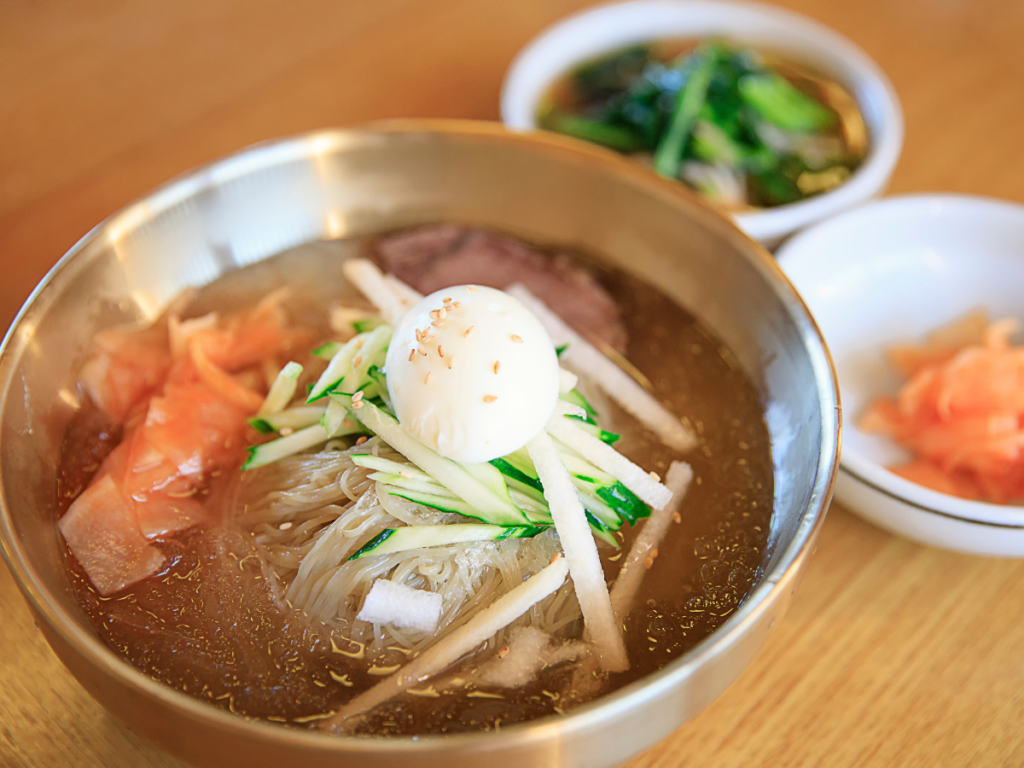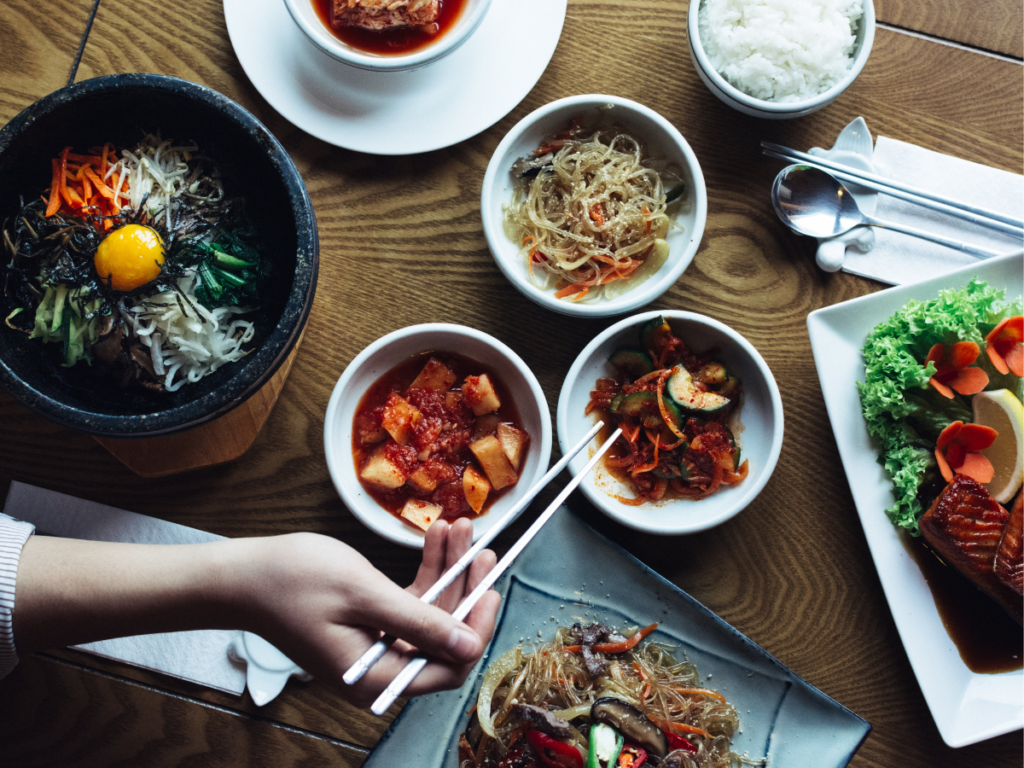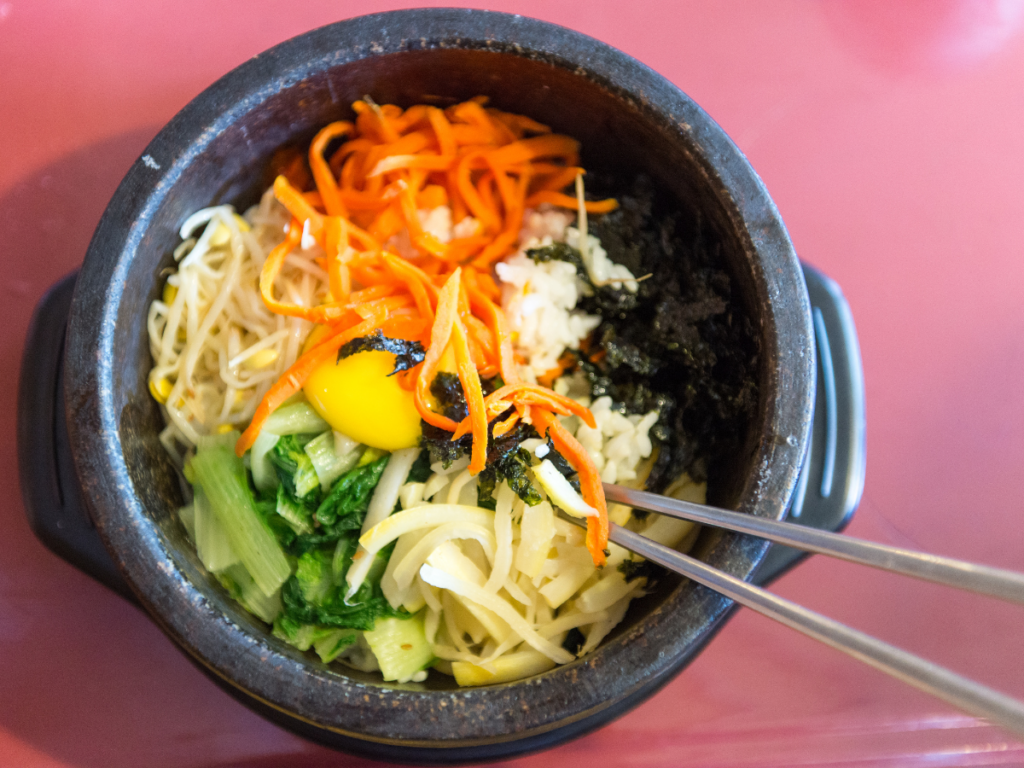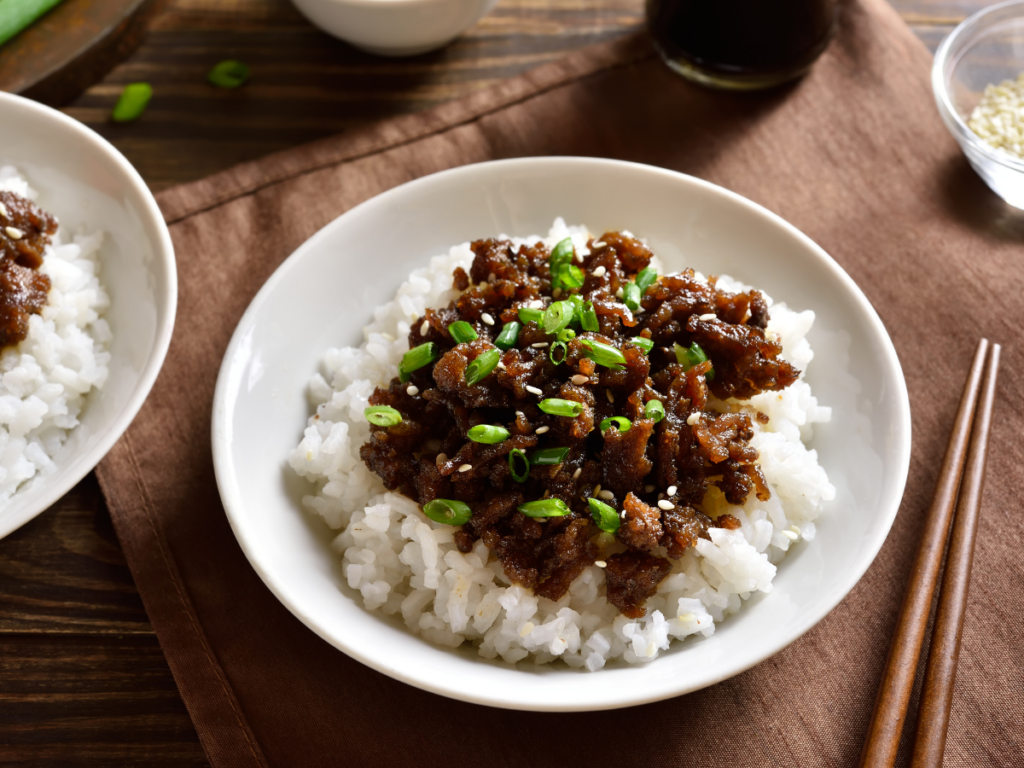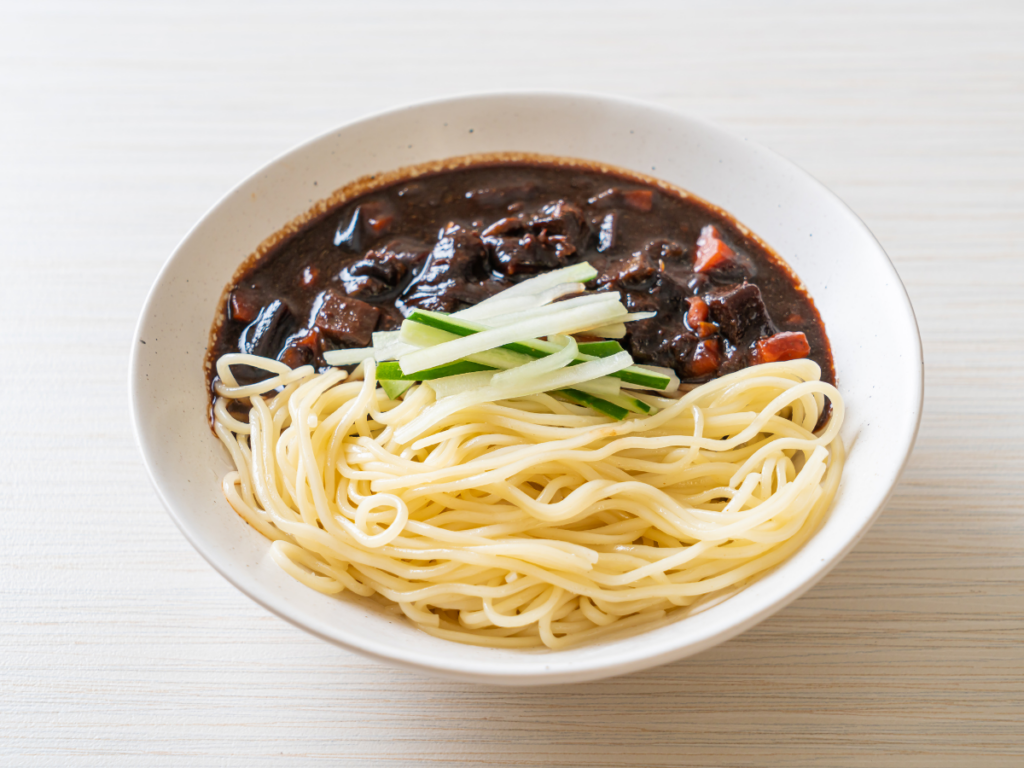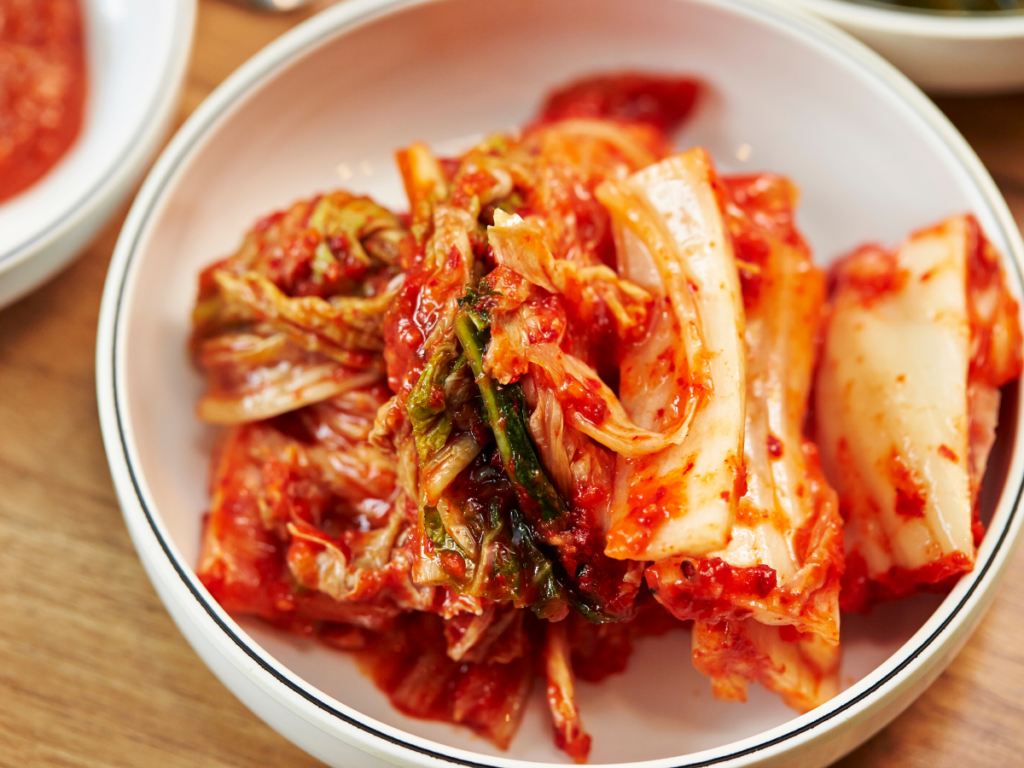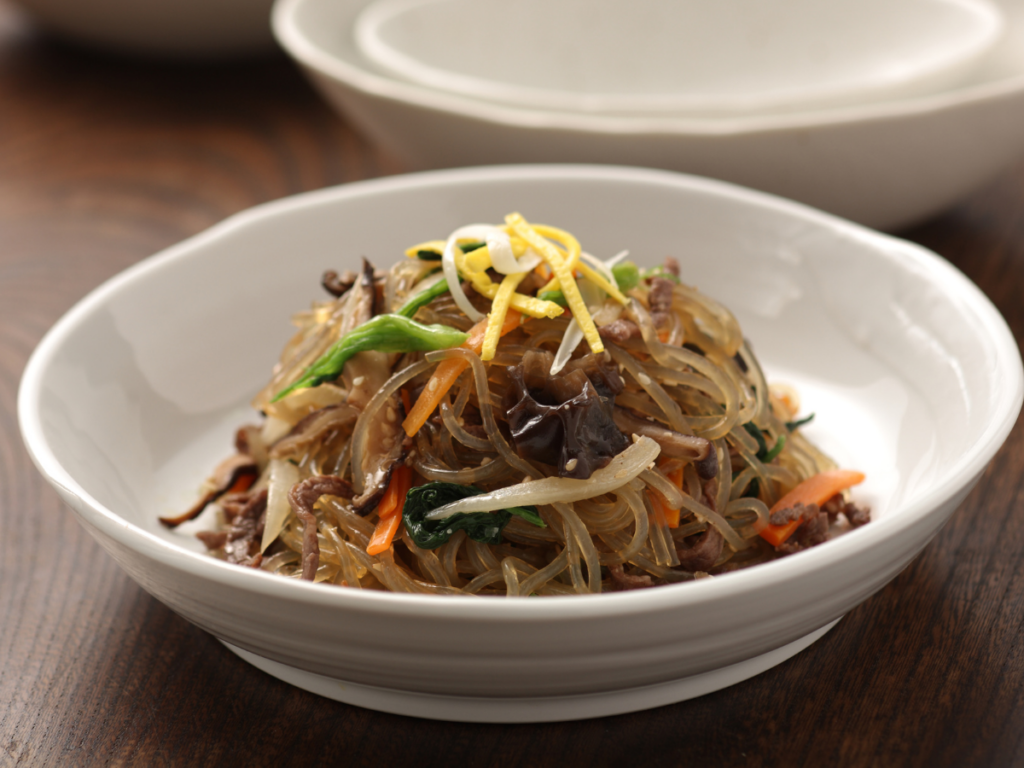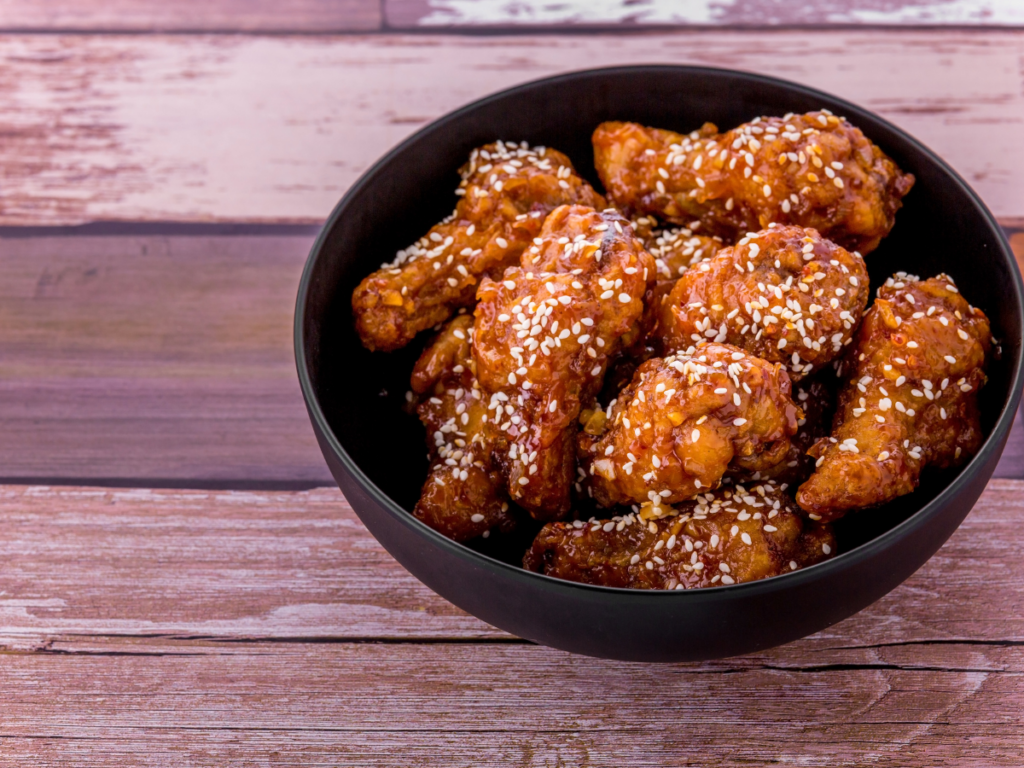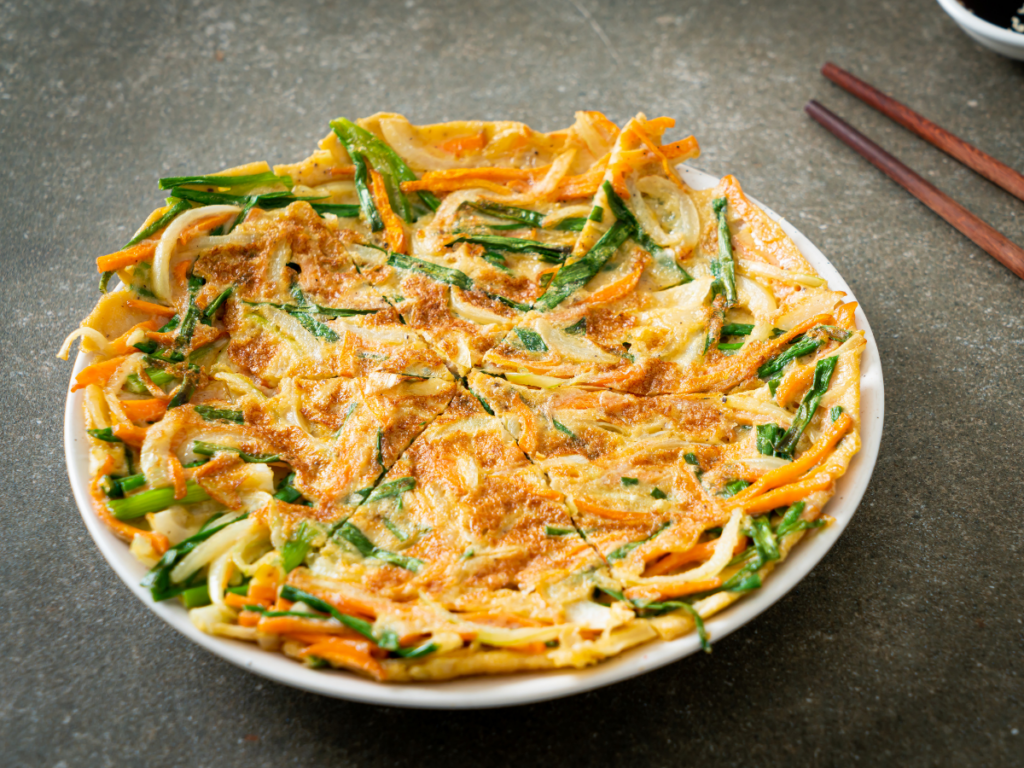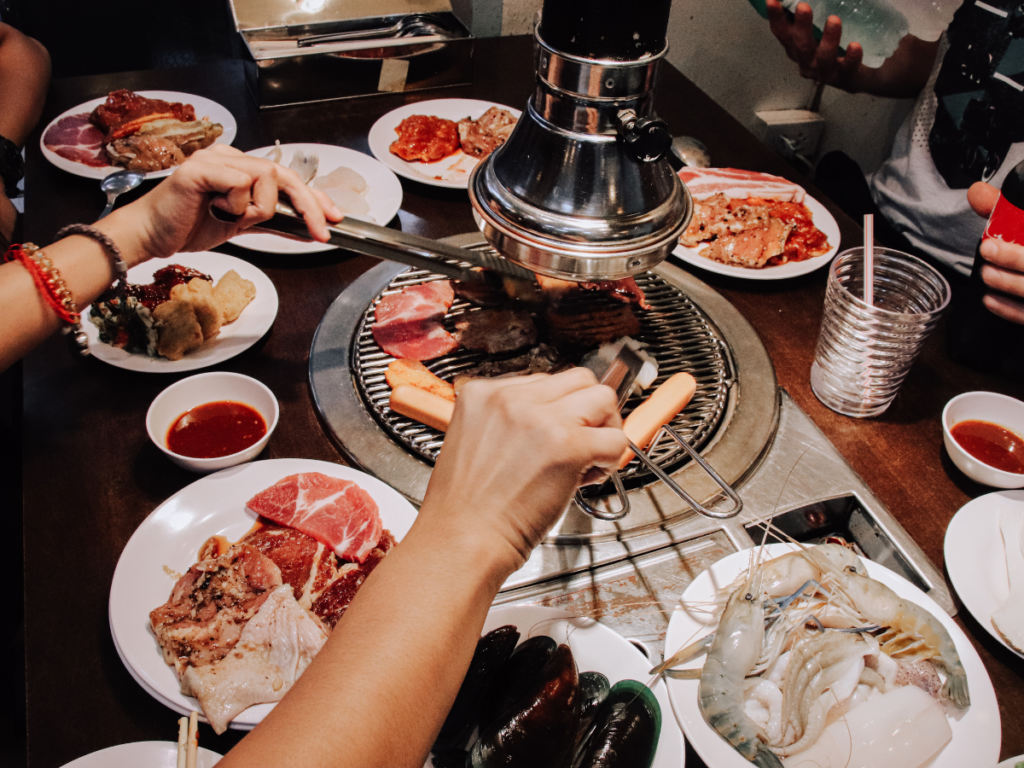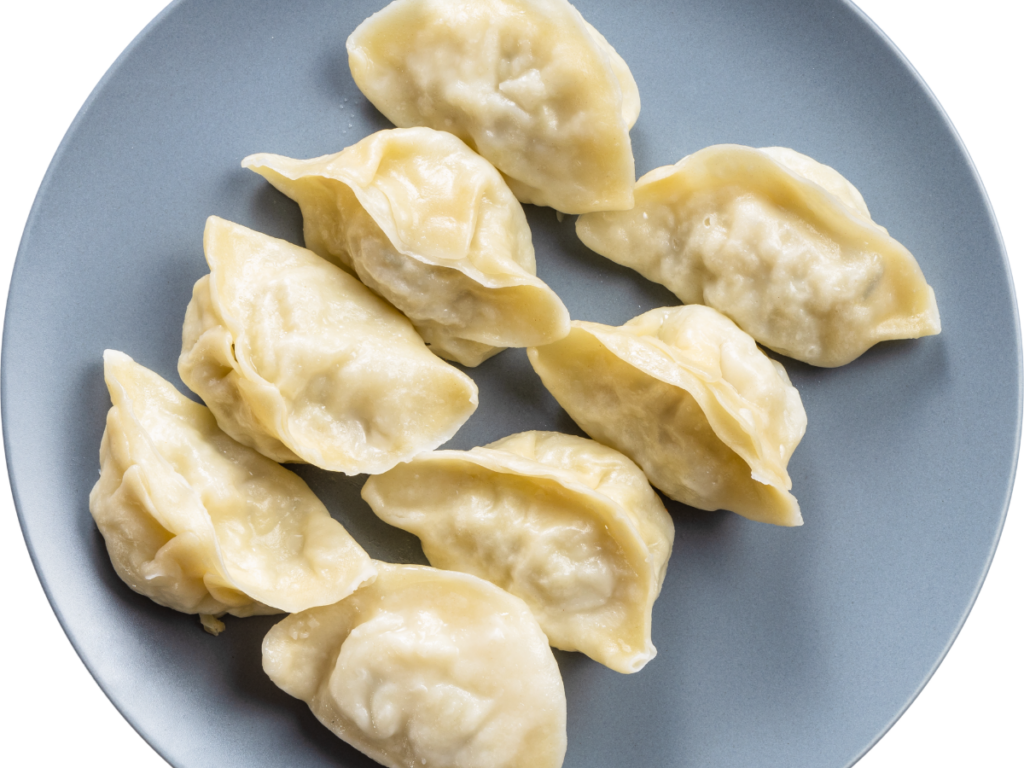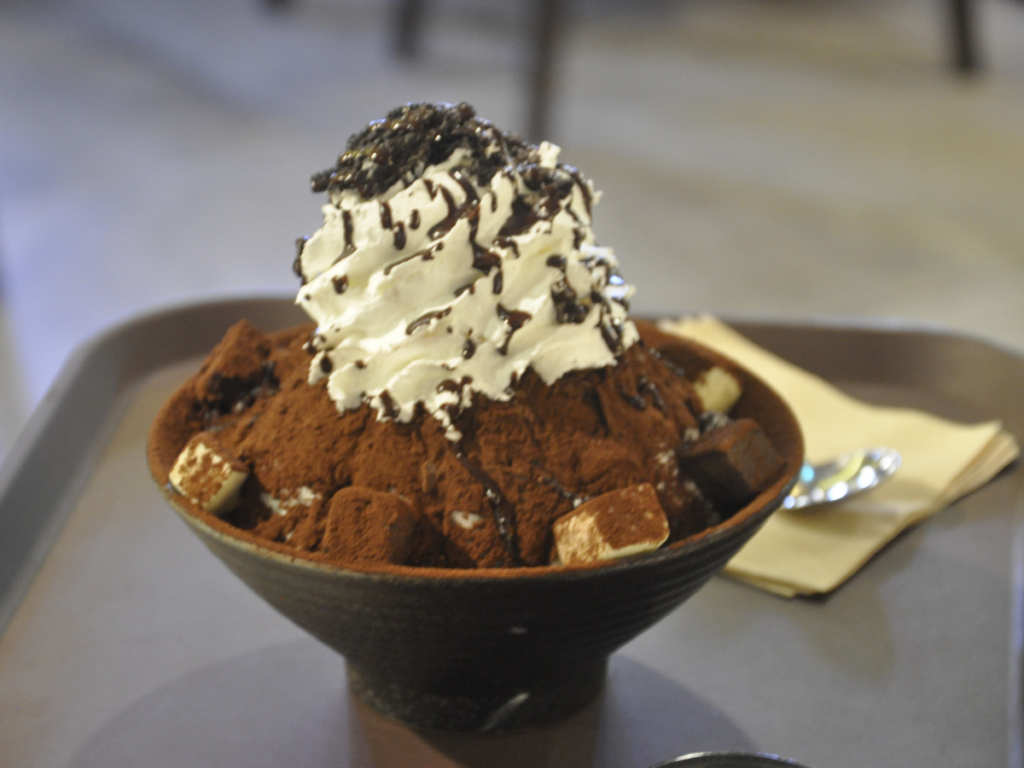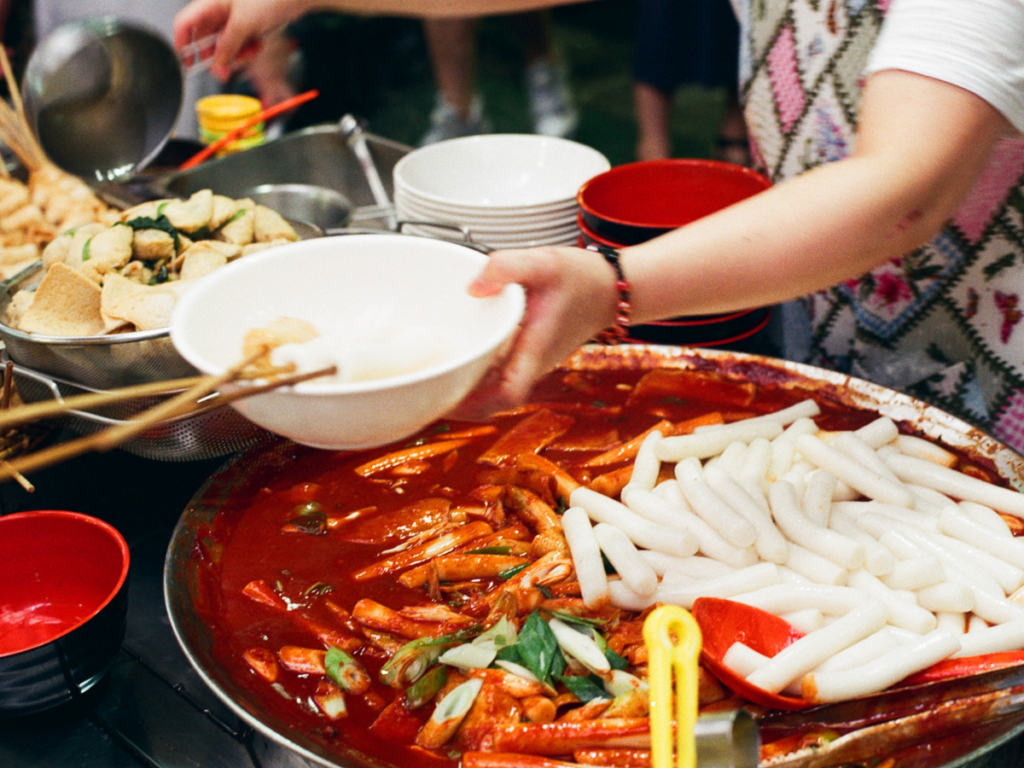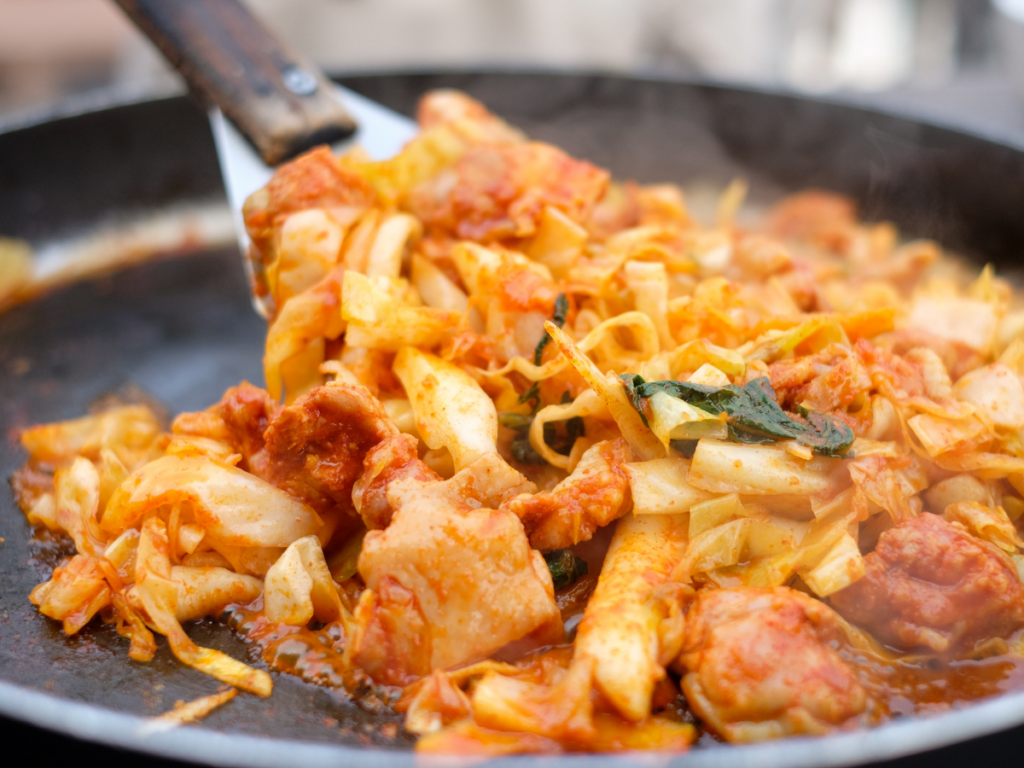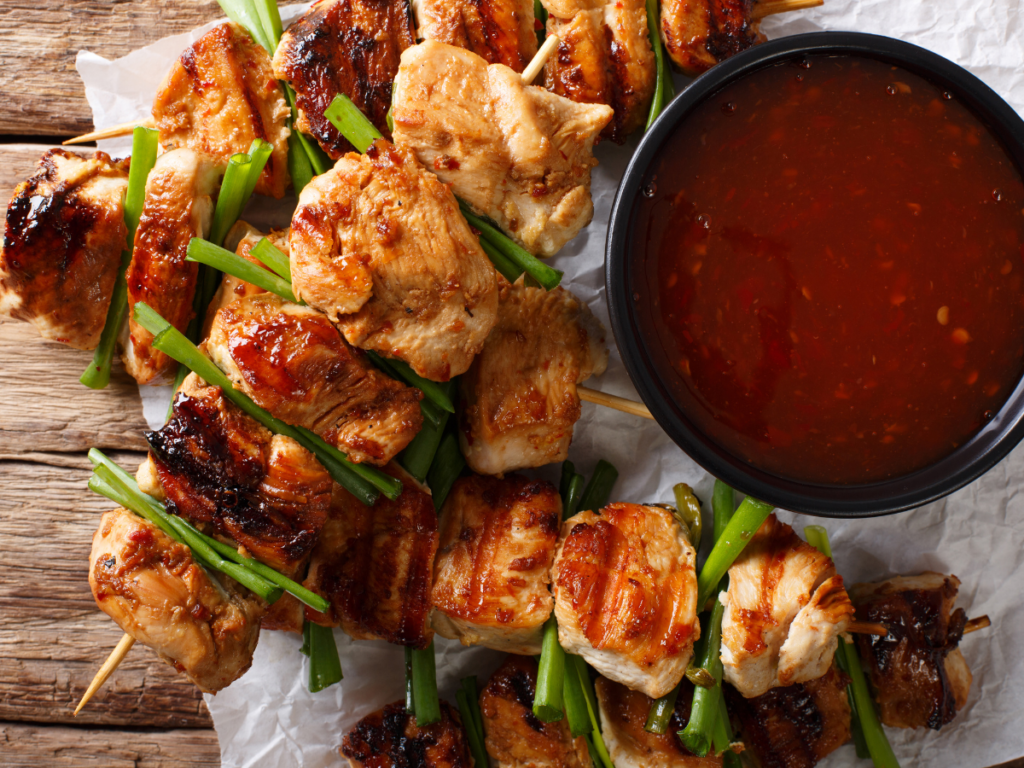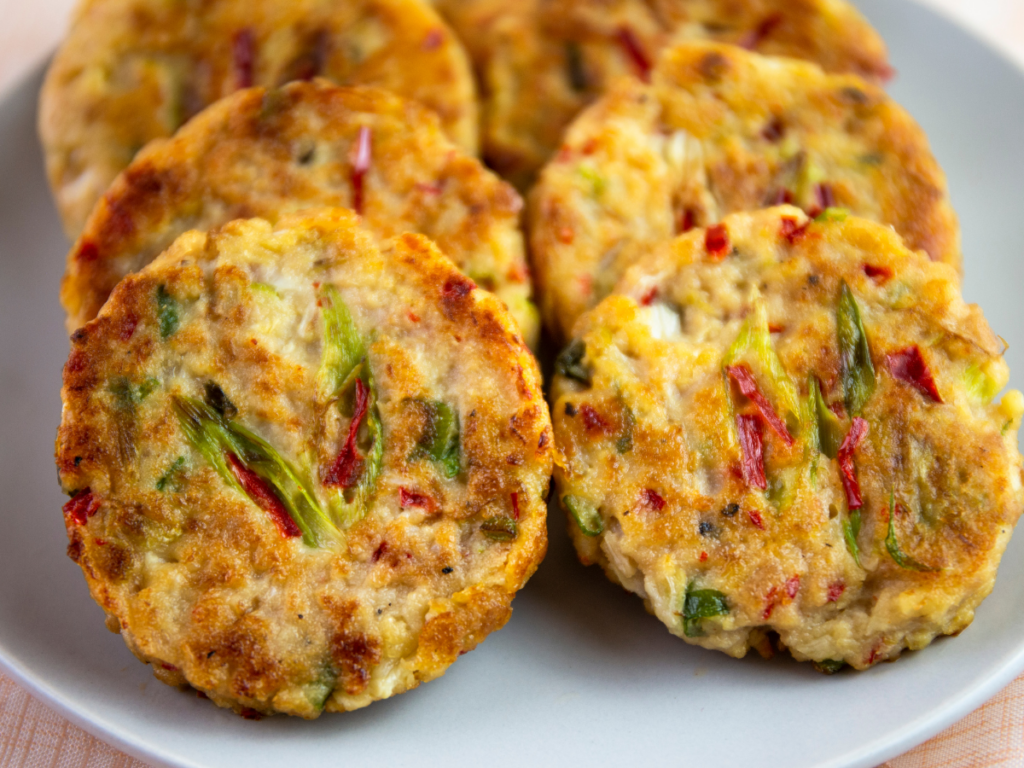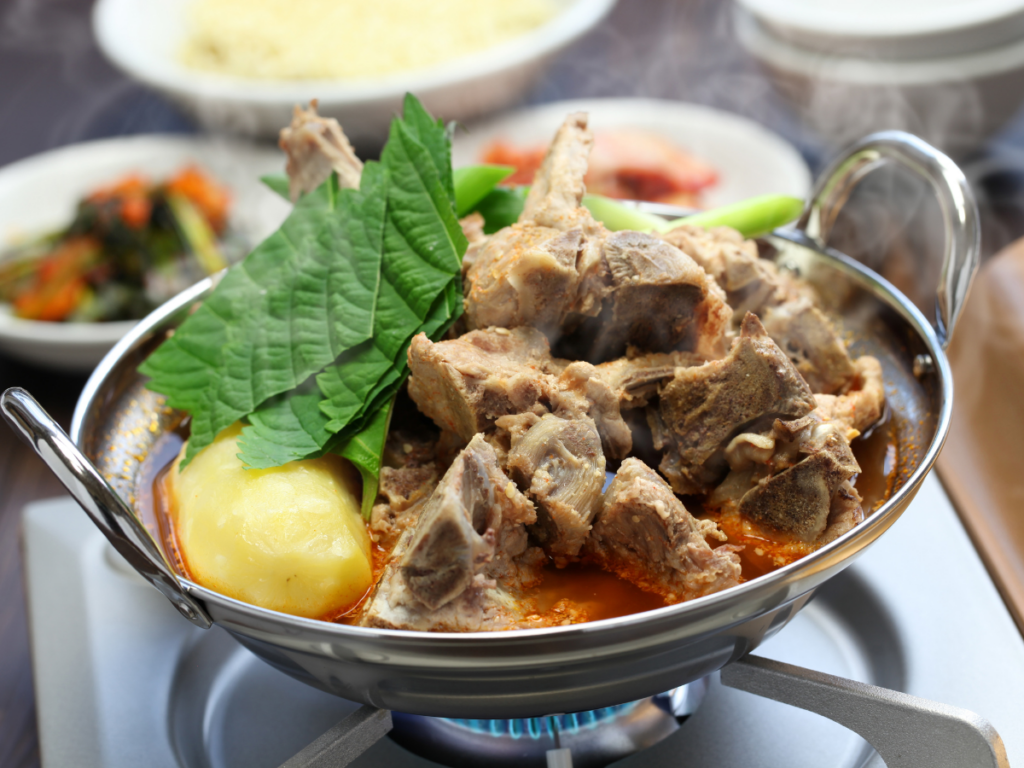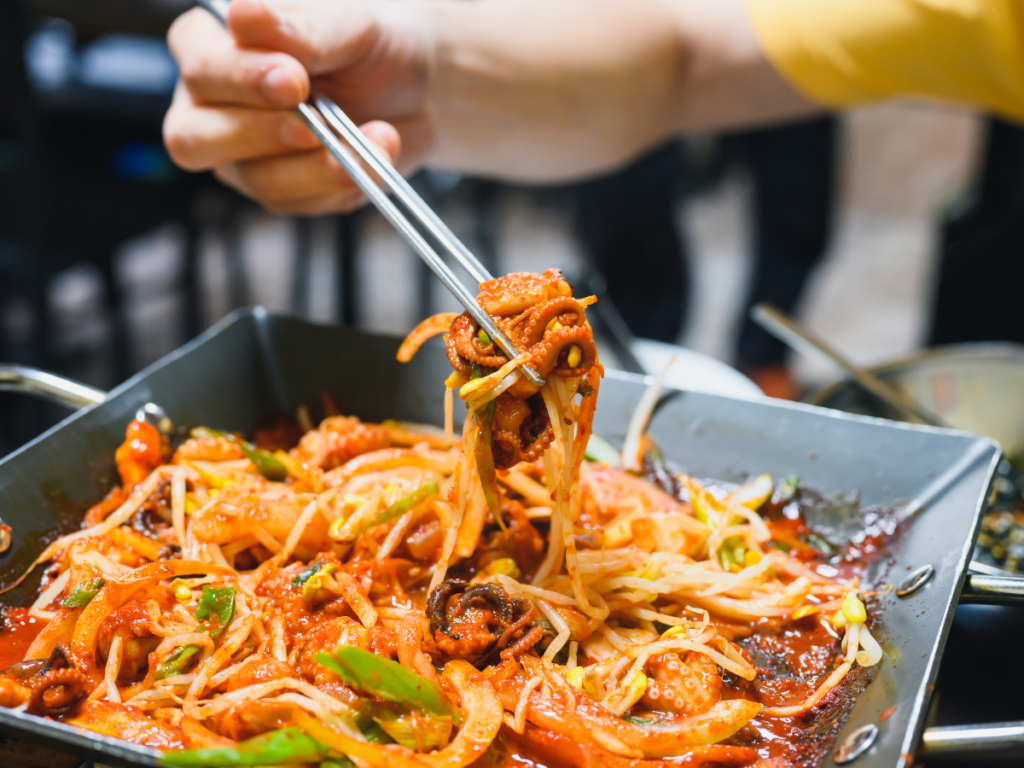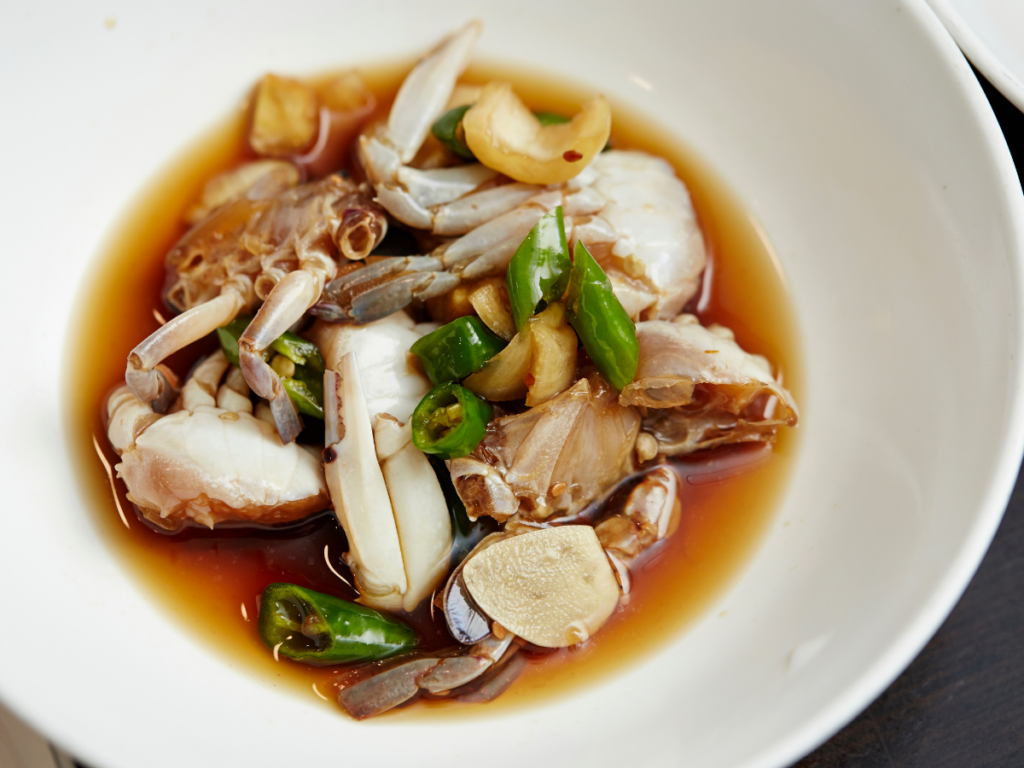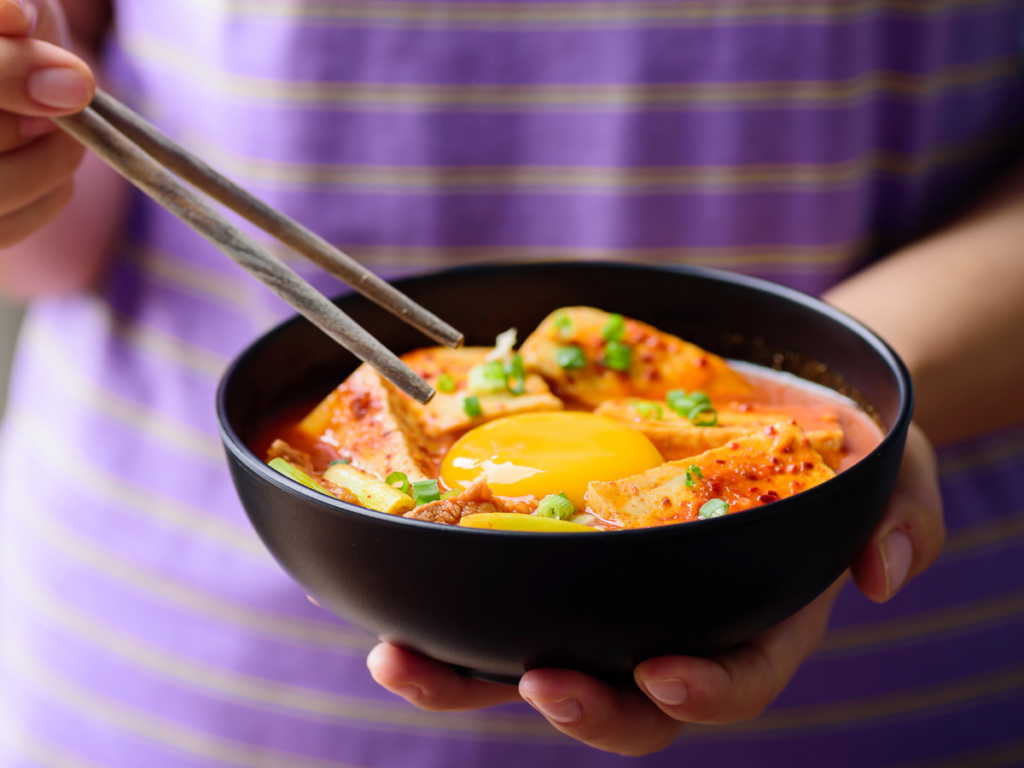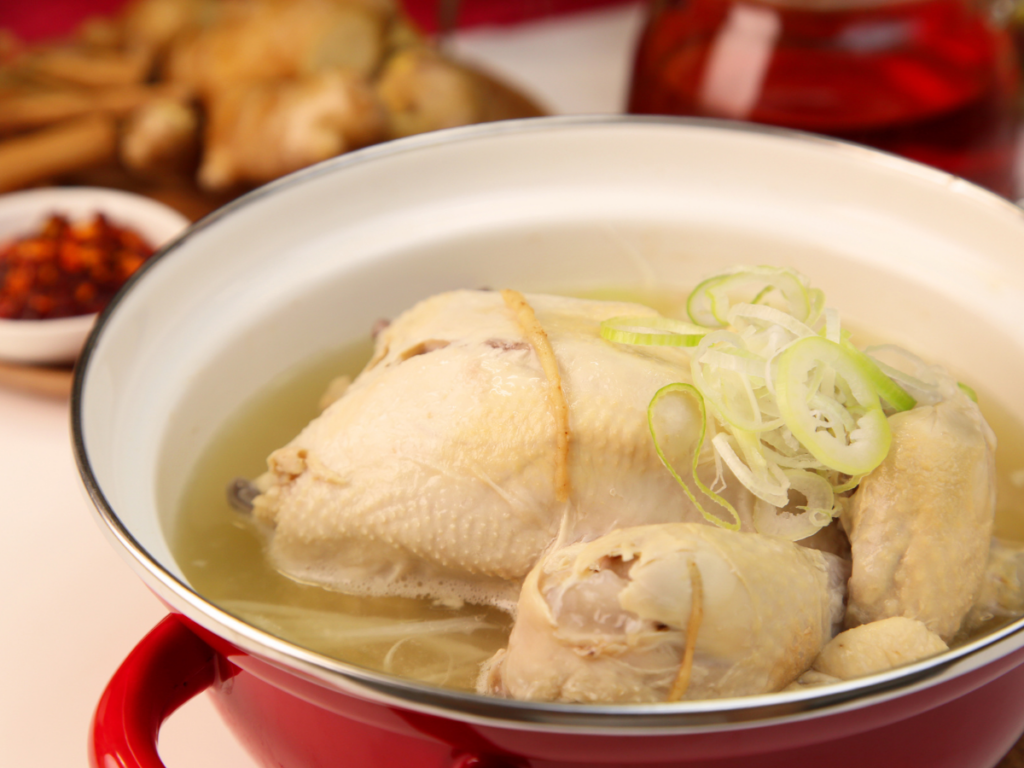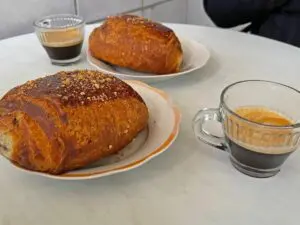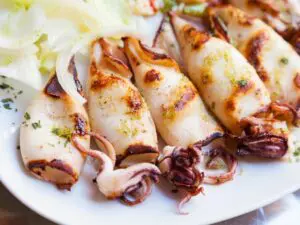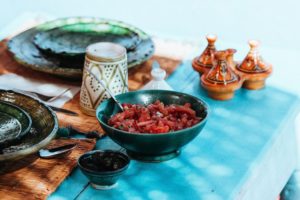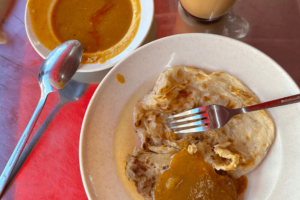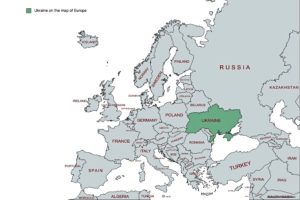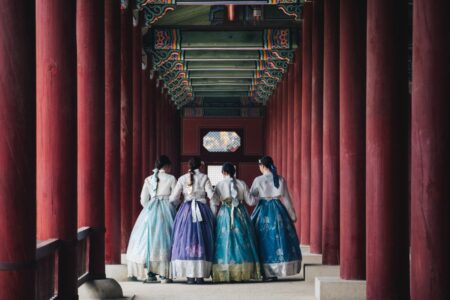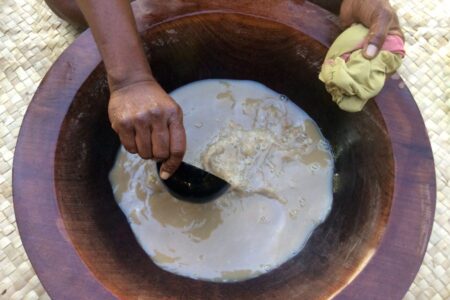At the heart of Korean cooking is an emphasis on balance and variety. From the spicy kick of gochujang (chilli paste) to the umami richness of fermented kimchi, every bite is a burst of flavour.
Korean food is crafted to satisfy cravings while nourishing the body.
What is Korean Cuisine?
Korean cuisine boasts a wide variety of dishes centred around rice, vegetables, and meats.
Every traditional Korean meal is accompanied by an array of small side dishes known as banchan, and kimchi is omnipresent at virtually every dining table.
The country’s distinct four seasons – spring, summer, autumn, and winter – profoundly influence its culinary landscape. This seasonal shift impacts the taste of ingredients, contributing to a delightful diversity of flavours and textures in recipes.
Korean cooking relies on key ingredients such as sesame oil, soy sauce, ginger, garlic, gochujang (fermented red chilli paste), gochugaru (pepper flakes), doenjang (fermented bean paste), and napa cabbage.
Vegetables play a starring role in the many foods from Korea, adding crunch, colour, and essential nutrients to every meal.
Grains and legumes play a significant role in the Korean diet. Dairy is mainly absent from the traditional Korean diet.
Bordered by the Yellow Sea, the East China Sea, and the East Sea (Sea of Japan), Korea’s culinary landscape is also profoundly influenced by its abundant marine resources, featuring a prominent presence of fish and shellfish in its diverse and tasty cuisine.
Whether it’s the hearty and nutritious bibimbap or the comforting warmth of ginseng-infused chicken soup (samgyetang), Korean cuisine is as pleasing to the eye as it is to the stomach.
What Are The Staple Foods From Korea?
Korean cuisine has various staple foods that form the foundation of many traditional dishes and the most popular foods from Korea.
Rice: Short-grain rice is a fundamental component of almost every Korean meal.
Kimchi: Kimchi, a spicy fermented vegetable dish, is another iconic staple, often made with Napa cabbage and radishes.
Tofu: Made from soybeans, it is a versatile ingredient frequently used in soups, stews, and stir-fries.
Noodles: Both wheat and sweet potato-based, are essential in dishes like Japchae and Jjajangmyeon.
Meat: Pork, beef, and chicken are common ingredients in Korean BBQ, soups or stews.
Let’s Begin! 20 Most Popular Foods from Korea
1) Bibimbap (Mixed Rice)
Bibimbap is one of the most popular Korean dishes; it means “mixed rice.” It consists of rice topped with vegetables, marinated grilled meats, and a fried egg served with spicy, sweet gochujang sauce.
The dish is mixed thoroughly before eating, and the best part is when there is some crispy rice at the bottom of the dolsot (the stone bowl that the rice cooks in).
If you enjoy bibimbap, look for a seafood variation called hoedeopbap that replaces meat with raw seafood such as tuna, octopus or salmon.
2) Bulgogi (Fire Meat)
Bulgogi is a cherished Korean dish featuring thinly sliced marinated beef that has been grilled or stir-fried. “Bulgogi” translates to “fire meat,” accentuating its charred taste and texture.
It’s known for its sweet and savoury flavour, making it a hit among meat lovers in Korean cuisine.
3) Jjajangmyeon (Noodles in Black Bean)
Jjajangmyeon is a popular Korean-Chinese dish consisting of lovely, thick, chewy noodles topped with a savoury black bean sauce made with diced pork or seafood and vegetables like onions and zucchini.
Jjajangmyeon is a staple comfort food in Korean cuisine and one of my favourite go-to foods from Korea.
4) Kimchi (Fermented Vegetables)
Kimchi is the king of Korean cuisine! It’s a spicy, fermented vegetable dish, usually made with Napa cabbage and radishes, drenched in a punchy mix of chilli, garlic, and ginger. Koreans love it so much that there’s a saying: “Kimchi on everything!”
It’s not just food; it’s a way of life, bringing zing and crunch to every meal.
Kimchi is eaten on its own or with white rice and is added to porridge, soups, and rice cakes.
Kimchi is also the basis for many popular Korean dishes, such as kimchi pancake (kimchijeon), kimchi stew (kimchi jjigae), and fried rice.
5) Japchae
Japchae is an enjoyable Korean dish made with stir-fried glass noodles (made from sweet potato starch) mixed with various vegetables like carrots, spinach, and mushrooms. It’s flavoured with sesame oil and soy sauce, creating a savoury and slightly sweet taste.
I have to admit, Koreans are magicians at balancing sweet and salty flavours!
Often served as a side dish or main course, Japchae is a colourful dish with an addictive, chewy texture. It’s different yet delicious, and people love it!
6) Korean Fried Chicken
Korean fried chicken, often abbreviated as KFC, is crispy and tasty, yet different to other fried chicken dishes worldwide. Its double-frying technique makes it exceptional, creating an incredibly crunchy exterior while keeping the meat moist and tender.
Once cooked, you can dip the chicken in mouthwatering sauces, such as sweet and spicy gochujang or soy garlic. This kind of food in Korea is such an addictive dish and my favourite fried chicken style.
However, the street vendor I mentioned in my Food Guide for Chiang Mai serves Thailand’s most delicious Gai Tod (fried chicken)!
7) Haemul Pajeon (Seafood Pancake)
Haemul Pajeon is essentially a savoury Korean pancake! It’s packed with an ocean of flavours, featuring a crispy exterior and a gooey, seafood-filled interior.
It creates a tasty dish with spring onions, seafood, and a delicious batter.
8) Gogigui (Korean BBQ)
Gogigui is the ultimate Korean barbecue experience! Known as “meat grilling,” it involves cooking various types of meat, like beef, pork, and chicken, on tabletop grills right at your dining table.
It’s a social, interactive, and fun experience where you can grill your meat, then wrap it in lettuce, kimchi, and grilled vegetables and slathered with your favourite Korean sauce.
9) Mandu (Dumplings)
Mandu is a Korean dumpling, usually filled with ground meat (such as pork, beef, or chicken), vegetables, and sometimes tofu or glass noodles.
These enjoyable pockets of goodness are usually seasoned with garlic, ginger, and sesame oil and then steamed, boiled, or fried.
Mandu is a cherished snack and a popular appetiser dish in Korean cuisine.
10) Bingsu (Shaved Ice Dessert)
Bingsu, also known as Korean shaved ice dessert, is a divine creation featuring finely shaved ice piled high and topped with an assortment of sweet treats.
From condensed milk and fresh fruits to red beans, ice cream, and flavoured syrup, Bingsu is an explosion of flavour and textures.
It’s the perfect way to cool off during hot Korean summers – and it reminds me of a similar shaved ice called O-aew that I often enjoyed while travelling in Phuket, Thailand.
Read more about it in my Food Guide for Phuket Town.
Get connected easily on your travels—buy an eSIM! An eSIM works like an app: buy it, download it, and get connected in minutes! It’s easy, affordable, and convenient. Keep your original phone number, too!
Click below and view which eSIM data plan you need for your next adventure. Use our referral code: RACHEL5045, to get $3 off your first purchase!
11) Naengmyeon (Cold noodles)
Naengmyeon is one of the most popular foods in Korea; it’s a noodle dish served cold. It features thin, chewy noodles from buckwheat or sweet potato starch, served in a chilled, tangy broth.
The noodles are garnished with cucumber, radish, and a boiled egg, creating a refreshing culinary experience.
Naengmyeon is especially treasured during hot summer months in Korean cuisine, offering a cooling and satisfying meal option.
12) Tteokbokki (Red Rice Cakes)
Tteokbokki is known for its addictive spicy kick and is a favourite snack or comfort food in Korean cuisine.
This popular Korean street food dish is made of chewy rice cakes, fish cakes, and spring onions soaked in a sweet and spicy gochujang (fermented red chilli paste) sauce.
It’s packed with flavour and an incredibly satisfying dish, often garnished with sesame seeds and sometimes boiled eggs.
13) Dakgalbi (Spicy Stir Fried Chicken)
Dakgalbi is not just a meal; it’s a communal and interactive dining experience enjoyed with friends and family in Korean cuisine.
Dakgalbi is one of the most mouthwatering foods from Korea- a dish that features stir-fried marinated chicken, along with vegetables like cabbage, sweet potatoes, and spring onions. These ingredients are cooked on a grill, often at the table, creating a sizzling and fragrant delight.
The chicken is commonly marinated in a spicy and slightly sweet gochujang-based sauce, infusing it with bold flavours; the result is bliss!
14) Dakkochi (Skewed Chicken)
Dakkochi, also known as Korean chicken skewers, are a popular street food in Korea. These skewers feature bite-sized chicken pieces (usually thigh or breast meat) marinated in a tasty mixture, including soy sauce, garlic, sugar, and spices.
The chicken is typically grilled or sometimes deep-fried; they’re the perfect accompaniment for a cold beer.
Dakkochi is typically served on wooden sticks, making it a convenient and tasty snack enjoyed by locals and tourists alike in Korean cuisine.
15) Bindaetteok (Mung Bean Pancakes)
Bindaetteok, also known as mung bean pancakes, is hugely popular in Korea. This dish is prepared from ground mung beans, vegetables, and sometimes meat or seafood. The mixture is pan-fried to create crispy, savoury pancakes.
Bindaetteok is seasoned with garlic, spring onions, and soy sauce, resulting in a satisfying snack or appetiser in Korean cuisine.
Enjoy it with a tasty dipping sauce; I promise you will love the crunchy texture and equally delicious taste.
16) Gamjatang (Potato Stew)
Gamjatang is a hearty Korean soup that translates to “potato stew.” But don’t let the name fool you; it’s not just about potatoes!
This soup features tender pork bones, vegetables, and sometimes tofu, all simmered in a spicy and aromatic broth. It’s a comforting and filling dish, perfect for warming up on cooler days.
Subscribe to our newsletter!
Expert travel tips, resources and exclusive discounts worldwide
17) Nakji bokkeum (Stir Fried Octopus)
Nakji bokkeum is an exciting dish in Korean cuisine, also known as spicy stir-fried octopus! Imagine tender octopus pieces wok-tossed with vegetables and a fiery chilli sauce, creating a flavour explosion that’s both spicy and super satisfying.
It’s a favourite among adventurous eaters, offering a delightfully chewy texture and a kick of heat that makes your taste buds dance.
So, if you’re up for a spicy seafood adventure, Nakji bokkeum is the way to go in the vibrant world of Korean foods!
18) Ganjang Gejang (Soy sauce marinated Crab)
Ganjang Gejang is a true delicacy in Korean cuisine, often dubbed as “soy sauce marinated crab.”
The hero of this dish features fresh raw crabs that are first left to soak in the marinade of soy sauce, garlic and various seasonings for several hours, allowing the flavours to permeate the tender crab meat.
This process not only enhances the taste but also partially ferments the crab, resulting in a unique umami-rich delicacy.
The crabs are then stir fried until perfectly cooked!
The dish is typically enjoyed by cracking open the crab shells and savoring the succulent meat.
Ganjang Gejang is often served with a bowl of hot rice, creating a perfect balance of textures and tastes.
19) Sundubu-Jjigae (Soft Tofu Stew)
Sundubu-jjigae is a comforting and spicy Korean stew made with soft tofu (sundubu), vegetables, and often includes ingredients like seafood, mushrooms, and meat.
The dish is flavoured with gochugaru (Korean chili flakes) and gochujang (fermented red chili paste), giving it a bold and spicy kick.
Sundubu-jjigae is typically served bubbling hot in a stone pot, and it’s often cracked raw eggs into the stew just before serving, creating a silky and rich texture.
Packed with hearty flavours and soothing warmth, this dish is especially popular during cold weather.
20) Samgyetang (Chicken Ginseng Soup)
Samgyetang is one of the traditional foods in Korea, featuring a whole young chicken stuffed with rice, garlic, jujubes (red dates), and ginseng, all simmered into a nourishing soup.
Known for its health benefits, this hearty meal is often enjoyed for its simplicity and comforting warmth, making it a staple in Korean cuisine.
If you’re interested in visiting North Korea, read this post – Should You Visit North Korea? Is it Unethical?
Read more about our experience visiting the ‘Hermit Kingdom’ in this post, the 7 Myths About North Korea EXPOSED!
After visiting both South Korea or North Korea, many travellers choose to continue on to China. If you’re heading that way too, don’t miss our post on how to avoid common tourist scams in China.
No doubt you will try some of the local cuisine, but I wonder how many of these 10 most bizarre foods in China you would dare to eat?
If you’re not an adventurous eater, these 10 Most Popular Foods from China will satisfy your appetite.
There are some awesome things to see and do in China, and I recommend you try visiting Pingyao—there is some fantastic food there, too!
Travel Tips for Asia
We have many travel guides and tips for Asia— a fascinating continent!
Delicious cuisine can be enjoyed across Asia, and our food map of Asia will inspire your food journey.
These top 5 best street foods in Asia are unmissable! We explain Central Asian food, including seven popular foods in this region.
Our Southeast Asia packing list will be helpful if you’re travelling here.
Furthermore, if you plan to travel long-term (or at least until the money runs out), these 21 cheapest countries to visit will help you make your hard-earned dollars stretch a bit further.
Not surprisingly, our top 10 best countries for food lovers include a few Asian countries.
You’ll need to stay connected while travelling in Asia. We recommend eSIM. It’s easy, reliable and affordable. View eSIMs for individual Asian countries, or consider a regional eSIM for Asia (which covers 18 countries).
If your travels in Asia are part of a much larger global adventure, then a Global eSIM may be the answer. It connects you in 124 countries, offering data-only eSIM and data/call/text eSIM. The Global eSIM has been a game-changer; we couldn’t imagine travelling without it now.
If you want to travel with like-minded travellers, consider joining a group tour. View the best deals on group tours in Asia.
Finally, check out our travel resources page for the best websites, tools and products we use to travel the world.
View the travel gear we use on the road, and don’t miss our best-ever travel tips compiled from more than twenty years of experience.


